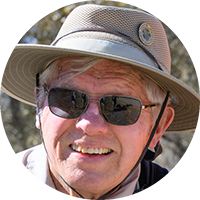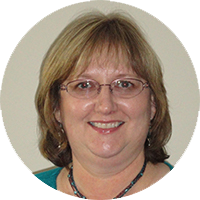Celebrate! CSU Milestones
Faculty and staff honored for years of service to Colorado State published April 27, 2020The annual Celebrate! CSU Milestones event honors Colorado State University employees achieving a decade of service or more. Although we can’t celebrate! in person this year because of the COVID-19 pandemic, CSU Events has created a special commemoration for everyone with a significant anniversary.
You can see all those with Milestones this year by following this link giving.colostate.edu/celebrate-colorado-state-university and selecting the years of service – anywhere from 10 to 55 – under Milestones. Congratulations to everyone, and thank you for your service to CSU.
And please enjoy several stories on just a few of the people celebrating Milestones this year.

Mary Ontiveros laughed when asked to look back 45 years to the day she started her first full-time job at Colorado State University.
“I was the assistant director of admissions, and I was hired to help recruit minority students to CSU,” she said. “I didn’t even know such a job existed. I guess I thought students just showed up on their own.”
Needless to say, much has changed since that day – for her and CSU. Ontiveros is now the University’s vice president for diversity and one of the most respected leaders on campus. She has launched numerous signature initiatives designed to create more opportunities for minority and first-generation students – like she was when she arrived on campus as an undergraduate – and provide the tools necessary for graduation.
“I’m proud of the work I’ve been able to do and happy to still be working in those areas,” she said.
Ontiveros is one of more than 570 CSU employees being honored for their service to the University via the annual Milestones celebration. read more

William Cotton
Celebrating 45 years
Department of Atmospheric Science
Walter Scott, Jr. College of Engineering
William Cotton began his long, impressive career at Colorado State University in 1974 as an assistant professor in the Atmospheric Science Department. Over the course of 45 years, Cotton supervised and mentored 44 Ph.Ds.’ as well as Master of Science students.
When Cotton first started at CSU, the campus was smaller and quieter, although not a quiet as today with all teaching and learning happening online. With the Atmospheric Science Department settled on the Foothills Campus to the west of the main campus, faculty and researchers formed a pretty close-knit family within the department. And over time, it has grown into a stronger department, according to Cotton.
“Throughout my time at CSU, the department has been a vibrant professional environment, attracting leading professors and having the pick of the top graduate student applicants,” Cotton wrote in his 2019 memoir, The Setting Sun: A Life’s Adventure.
During his college years, Cotton studied atmospheric science in a new department at he State University of New York, Albany, and got his Ph.D. at Penn State, with his dissertation on how silver iodide aerosols affected clouds and storms.
In the 1990s, Cotton also wrote a book, “Storm and Cloud Dynamics,” with Richard Anthes, his former sailing friend in Miami.
While at CSU, Cotton’s main focus of study was on how aerosols, emitted through human activities like fossil fuels, affect clouds and storms.
In the early 2000s, he began a five-year transitional period into retirement. This meant he was no longer advising 15 to 20 graduate students, he wouldn’t be working on four to eight contracts and grants, and he wouldn’t be publishing peer-reviewed research.
Finally, in 2010, at the age of 70, Cotton moved into the role of professor emeritus. He would only be doing moderate research and supervising a few of the classes in the department.
Later this year, whenever it is rescheduled, Cotton will be honored at the Milestones event for his many years at CSU. Milestones “celebrates the teaching, research, and service achievements of CSU students, alumni and friends, academic faculty, administrative professionals, and classified staff.”
Some of Cotton’s favorite moments at CSU are the interactions he has had with his students.
“I really appreciated my master’s and Ph.D. students,” he said. “I have been fortunate to have many outstanding students who have had outstanding careers.”
Story by Makenna Green

Debbie Smith
Celebrating 45 years
Office of Budgets and Institutional Analysis
Debbie Smith began her 45-year career at Colorado State University with the College of Engineering in 1974 before being recruited for a position in the Office of Budgets & Institutional Analysis in 1988, where she’s remained ever since.
“It’s great being part of the heart of what keeps things moving forward,” Smith says. “We’re responsible for helping to establish the university budget and work closely with campus to ensure budgetary compliance with university and legislative policies. It is no small task and it takes the cooperation of many individuals collectively working together to accomplish this year after year.”
Responsibility for the annual salary increase process is another component that Smith has been part of all along.
“The budget allocations process starts out with a very big budget number, eventually distributing budget down to an account level within every institutional department. It’s then our job to make sure that everything reconciles back to control numbers and we load budgets into our central system successfully each fiscal year,” she says. “We strive to have a ‘big happy family’ attitude even though there are constant deadlines and pressures across campus during the various components of the budget cycle.”
With the current pandemic outbreak, another important moment in Smith’s career that stands out was the infamous flood of July 1997. While her office on the third floor of the Administration Building on the Oval wasn’t harmed, Smith recalls getting a phone call early the following morning of the flood to come into work to help support the efforts of the vice president of administrative services in assessing and communicating the damage.
“It was devastating to see the damage done around the Oval where the floodwaters had swept through some buildings and the contents were still floating in muddy water across the entire Oval,” Smith Recalls. “Our office helped set up makeshift office space for a group of employees from Accounts Receivable so they could continue working and process billings and tuition payments. It was a tight working space for them, but it worked out just fine.”
There were some positives to come out of the devastation, according to Smith.
“That work continued for a long time and the recovery, based on decisions made after the flood, were a tremendous improvement to some of the buildings impacted,” she says. “The campus came out of it stronger and more appreciative for each other as a community and proud of everyone’s accomplishments.”
Smith’s work and expertise in budgeting for the university has been much appreciated – so much so that when she retired 12 years ago, she was asked if she would come back in the part-time role that she still holds today.
“I continue to mentor, advise, document processes and work on special projects,” she explains. “Sometimes they might want to try some new things, and I can offer the historic perspective. I find myself saying, ‘Well, we tried that, here are the pros and cons,’ about certain processes.”
Smith’s appreciation of her colleagues makes the busy and stressful work in the Office of Budgets worth it.
“We’re a task-oriented, on-schedule, busy office,” she says. “The budget is one giant jigsaw puzzle, and it’s our job to keep the pulse going and be able to react quickly to the needs of the university.”
Story by Brian Dusek